Guaranteed Christmas Delivery Order Now*
Diamond Education
Shopping for diamond jewelry or loose stones can be an overwhelming experience. There are many different aspects to consider when investing in a brilliant piece; making it important to educate yourself in the various ways that diamonds are evaluated. The Four C’s, which are carat weight, color, cut and clarity, are an easy way to remember the important factors that affect the value of your diamond. The shape of the stone also plays a part in determining the worth. These features are outlined in more detail below, and will help you to make an educated decision when selecting a diamond, ensuring you choose a stone with lasting beauty and value.
Carat weight is often associated with the size of the diamond, but it is actually a reflection of the weight. One carat is equal to 200 milligrams in weight. For diamonds under 200 milligrams in weight, each carat is divided into 100 points. For example, 0.85 carats is noted as 85 points and .50 carats, or 1/2 carat is noted as 50 points. Size is measured by the distance in millimeters across the top of a diamond, when a jeweler looks down on the ring from above. Although a jeweler does consider carat weight when evaluating size, he or she also takes the cut and distance across the top of the diamond into consideration.
Most often a heavier stone will look larger in size, but this is not always the case. At times, a diamond of a lower carat weight may actually seem larger, due to the cut of the stone. A higher cut grade will dramatically change the apparent size of your stone, making diamonds of lower carat weight actually look larger than higher carat weight stones with lower cut grades. A diamond that is cut correctly will reflect the maximum amount of light out of the top of the stone creating a marginally larger effect, while the weight of a poorly cut stone will accumulate at the bottom of the ring setting and lose much of its viewable size.
Because every hand is different, a bigger diamond is not always better. To find the right carat weight for you, consider the size of your finger, your budget and the jewelry setting. If you wear a small ring size, such as a 5 or 6, a larger stone will overpower your hand and make your fingers appear shorter. For larger ring sizes, a bigger stone will look proportionate, and you’re sure to love the extra sparkle! It’s important to note that any specific ring setting can not hold every stone size. When purchasing an engagement ring mounting, be sure to inquire about the stone size and shape that could fit in.
A diamond’s value is directly influenced by how colorless it is. The less color a white diamond has, the higher it’s value will be. The stone is graded on a scale of D to Z, with D being the highest rating and Z being the lowest. This scale does not apply to fancy colored diamonds, such as black, blue, yellow and pink stones that are extremely rare. The scale breakdown is as follows:
D: This is the highest rating possible. It is reserved for stones that are completely colorless. These diamonds are extremely rare and very valuable.
E-F: To the naked eye, these stones appear colorless. Under a microscope, however, small traces of color can be detected.
G-H: These stones are very near colorless. It is hard to detect the visible difference unless the stone is compared side by side to a D-F diamond. Although these diamonds are not perfect, they are still highly valuable.
I-J: Like G-H, these stones are near colorless. It is possible that they will have a slight tone that is visible.
K-M: Slight yellow or brown tints will appear in these stones. Although they are only fainted tinted, these stones are not recommended for engagement rings or large stone pieces.
N-R: The yellow and brown tint is visible to the naked eye.
S-Z: The yellow and brown tint is obvious and will be noticed even when mounted.
Color is an extremely important feature, directly impacting the value of the stone. The human eye is quick to notice any color variation, making it worth investing in a colorless or near colorless stone.
The cut of the diamond will have the greatest impact on the brilliance of the stone. When you see a beautiful rock, it’s sparkle can be attributed to the quality of the cut. When a diamond is cut, it is designed to return light out of the top of the stone. If it is cut well, it will result in the glamorous sparkle that diamond stones are famous for. A poorly cut stone lets the light leak from the sides or bottom, producing a lackluster image. The cut is graded on appearance and design or craftsmanship.
Appearance:
1. Brightness: the amount of light reflected from the interior and surface of the diamond
2. Fire: The spectrum resulting from the dispersion of light.
3. Scintillation: The bright flash of light that occurs when a diamond is moved. Scintillation is also known as the sparkle of the stone.
Design and Craftsmanship:
1. Weight Ratio: The relationship of the carat weight and millimeter size of the diamond.
2. Permanence: The stones ability to last and resist breaking and chipping.
3. Polish: The surface of the diamond should be smooth. The polish of a stone is graded from poor to excellent.
4. Symmetry: The facets of the diamond should be aligned, resulting in a perfectly symmetrical look.
Cut Grading:
Poor: The weight ratio of the diamond is off, resulting in a lackluster stone that does not allow the light to be reflected back to the surface.
Fair: A fair cut stone lets a small amount of light reflect to the surface, but not as much as a higher quality cut would.
Good: These stones are the best value, reflecting a good amount of light to the surface, but not as much as a higher quality stone. The sparkle is evident, and the price is very fair.
Very Good: The cut is superior, reflecting a great amount of light to the surface.
Excellent: These stones are brilliant to behold, reflecting the maximum amount of light. This cut is extremely rare and very valuable.
Ideal: It exudes excellence in cut and symmetry and very good to excellent in polish, resulting in a diamond that is breathtaking to behold.
Almost all diamonds have minor imperfections, but the fewer that appear in the stone, the higher its value. These extremely small imperfections are usually only detectable by microscope and will not effect the visual appearance of your stone. If the diamond is larger, however, the extra facets will allow the viewer to see into the diamond, making clarity a more important factor. The Gemological Institute of America developed a scale that contains 11 grades. Clarity is rated from flawless to included.
1. Flawless: No blemishes or inclusions internally or externally. Flawless stones are extremely rare and highly valuable.
2. Internally Flawless: These stones show no blemishes or inclusions when observed under 10x magnification and are extremely rare.
3. Very, Very Slightly Included: Skilled diamond graders may be able to find small blemishes or inclusions under 10x magnification.
4. Very Slightly Included: Skilled graders can spot blemishes or inclusions under 10x magnification. The faults are very minor, but make the stones extremely affordable.
5. Slightly Included: Blemishes or inclusions are evident to skilled graders under 10x magnification.
6. Included: Inclusions are obvious and may negatively effect the beauty and brilliance of the stone.
A few aspects to consider when judging clarity are the amount, color, size, nature and position of the imperfections.
Choosing a shape is highly dependent on personal taste. You should choose a shape that reflects your personality and unique style. It is important to remember that shape is simply form, and does not reflect the quality of the cut. There are ten different shapes to choose from when selecting a stone.
1. Round: This is the most popular shape, because it is versatile and timeless. It is sure to look beautiful in any setting, radiating a large amount of sparkle. Round diamonds are used in all types of jewelry, including engagement rings, necklaces, bracelets and earrings.
2. Princess: The princess cut stone is growing in popularity and is commonly seen in engagement rings. This shape has pointed corners and varies from square to rectangular forms. The difference is seen in the ratio between the length and width of the stone.
3. Emerald: The rectangular facets of this stone create a unique and vintage look. For a traditional emerald look, find a stone with a length to width ratio of 1.30 to 1.40. This shape highlights the clarity of the stone, making it a more important feature.
4. Asscher: This cut is similar to the emerald, except the shape is square. The ratio should be between 1.00 and 1.05. Like the emerald shape, the asscher will also show any blemishes or inclusions more evidently than other shapes.
5. Marquise: If you are drawn to the “big bling” look, the marquise diamond may be the best choice for you. The shape maximizes carat weight, resulting in a large size look. The Marquise shape is similar to the oval, except there is a point on each end. This shape will appear skinnier or wider depending on the height to width ratio.
6. Oval: This beautiful shape has all the positive attributes of a round diamond, such as brilliant sparkle and shine. The length to height ratio will affect the look of the stone. Skinnier shapes look more vintage, while wider shapes have a modern vibe.
7. Radiant: This shape is halfway between a rectangle and a square. It is characterized by its trimmed corners. The length to width ratio will affect the look of the diamond.
8. Pear: The pear has a single point and rounded end. The teardrop shape is stunning to behold and truly unique. The length to width ratio will affect the look of the diamond, resulting in a more or less obvious pear shape.
9. Heart: This romantic shape is like the pear, except it features a cleft that gives it that “heart shaped” look. The length to width ratio will yield different looks, from long, lean hearts to shorter wider shapes.
10. Cushion: This shape is known for its rounded corners and large facets that produce jaw-dropping sparkle. This style is also known as the “pillow cut” shape and can range from a square to rectangle shape, depending on the length to width ratio.
While these shapes cover a large majority of diamond styles, there are some vintage stones in circulation with completely different looks.
Any diamond you purchase should include a certificate from an independent and non-biased third party. This certification is also known as a grading report, and will provide you with an honest assessment of the quality of your diamond. The Gemological Institute of America and The American Gem Society Laboratories are two of the most respected laboratories that offer certification, and can be trusted to provide you with a complete assessment from a highly trained professional. Your diamond will be assessed based on the following characteristics:
1. Measurement : The diamond’s size, measured in millimeters.
2. Weight: The diamond’s weight to the nearest hundredth of a carat.
3. Depth: The diamond’s depth or width in relation to the diameter of the stone.
4. Table: The diamond’s table or width facet in relation to the diameter of the stone.
5. Girdle: The range of the girdle’s thickness.
6. Cutlet: The appearance of the cutlet facet.
7. Finish: The grade of the polish and symmetry of the stone, as referred to above in cut grading.
8. Clarity: The diamond’s grade of clarity under 10x magnification.
9. Clarity Plot: A map that plots the exact locations, types and sizes of the diamonds blemishes and inclusions.
10. Color. The grade of the color as referred to above.
11. Fluorescence: The color and its strength when observed under an ultraviolet light.
12. Comments: Any additional remarks on the diamond’s features that may or may not be included in the report given.
Being aware of the five features of diamonds will enable you to pick a stone that will retain it’s monetary value and brilliance. Remembering the Four C’s is the easiest way to make an informed decision about your diamond purchase. Obtaining a certificate will leave you feeling confident in your selection, enabling you to find a diamond that you will treasure for years to come.
Once you’ve found the perfect diamond, it is crucial to care for it in the correct manner. To keep your diamonds in top shape, there are a few basic steps that you should follow.
1. Although diamonds are very hard stones, they can be scratched, especially by other diamonds. When storing your diamond jewelry, it’s best to keep your pieces in a lined case with dividers to separate each item. This will prevent the harming of your jewelry and keep everything in pristine condition.
2. If you notice any abnormality in your diamond jewelry, avoid wearing the piece until you can have it checked out by a professional jeweler. There are countless stories of damaged prongs that result in the loss of a treasured stone. Avoid this tragedy by carefully examining your pieces regularly.
3. It’s best to avoid wearing diamonds when you are doing any extensive labor, including yard work and cleaning. Chemicals such as chlorine bleach can irreparably damage your stones.
As time progresses, it is inevitable for lotions, soaps, powders and natural oils from your skin to build up on the diamond and dull its shine. Cleaning your diamonds should be a regular occurrence, because it is the best way to restore their original luster. There are many ways to clean your diamonds, but we suggest the following:
1. Detergent Bath: Prepare a bowl of warm water and mild household liquid detergent. Dip your jewelry in the mixture for a few seconds. Remove your jewelry and brush gently with a soft-bristled brush. Rinse in lukewarm water and pat dry with a soft cloth.
Tip: Be careful not to rinse over a drain, because it’s easy to lose hold on slippery jewelry pieces and avoid cleaner with chlorine!
2. Quick Dip Method: There are many brand named jewelry cleaners that simply require a few seconds to clean your stones. When purchasing a jewelry cleaner, read the labels carefully to ensure it is made specifically for the metals and stones that you wish to clean.
3. Ultrasonic Cleaner: Currently, there are many ultrasonic cleaners that are available. These machines require you to place your jewelry in a metal cup filled with detergent and warm water. The machine employs high-powered turbulence to clean your diamonds, leaving them sparkling and good as new!
4. Cold Water Soak: Prepare a solution of 4 parts cold water and 1 part mild dishwasher detergent. Soak your diamonds for several minutes, before removing and brushing the mount with a soft-bristled brush. Rinse in the solution and let dry on a piece of tissue paper.
Every method listed above is sure to revive the sparkle of your diamond. Be careful to follow all instructions on store-bought cleaners and ultrasonic cleaners. These methods work ONLY for diamonds. Other gemstones, such as pearls, opals, corals and other gems may be harmed from these cleansing methods.
Cleaning your diamonds regularly is the best way to maintain their original shine. Storing your diamonds in a protective case, examining jewelry pieces for damage and removing your jewelry before extensive manual labor is the best way to ensure a long life for your jewelry pieces.
Click here to View Earring Education
Guaranteed Delivery applies only to orders shipped within the United States (unless otherwise stated below). Not valid on International orders. Our delivery guarantee EXCLUDES: (i) delays due to customer error or failure to respond in a timely manner to our requests, (e.g. different billing and shipping address) (ii) shipment delays caused by third party shipping companies (e.g. FedEx, UPS, etc.), and (iii) locations to where an expedited and/or Saturday shipping option is not available, including po box addresses (iv) Customer not available to sign and receive package delivery. We reserve the right to cancel any order for any reason.
*Only orders of stud earrings and solitaire necklaces are guaranteed by Christmas. Orders must be placed by 2PM PST on Monday, December 22nd, to guarantee delivery by Wednesday, December 24th, 2025.

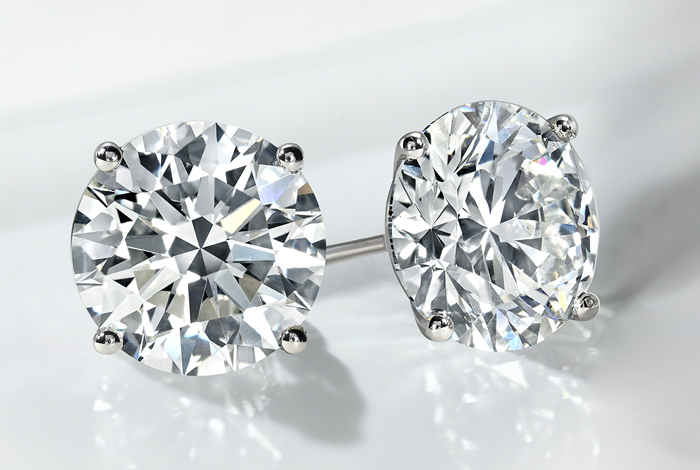
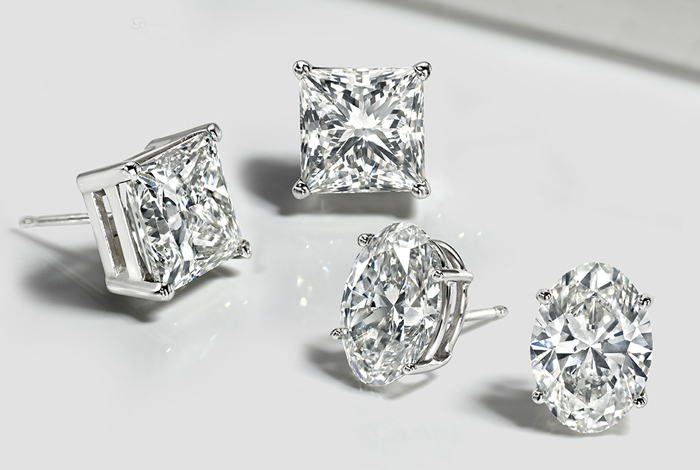

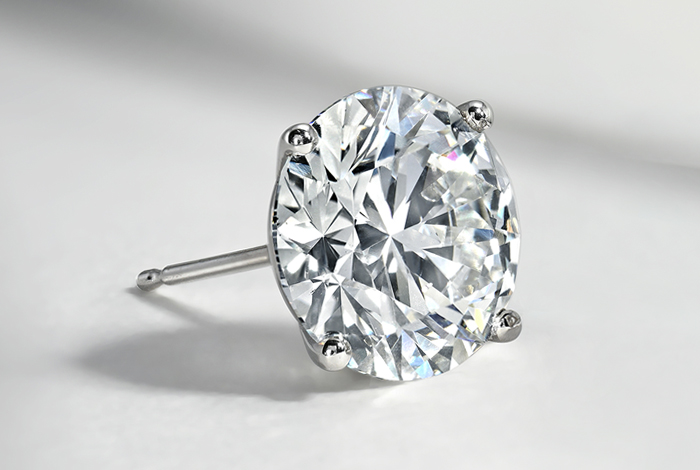
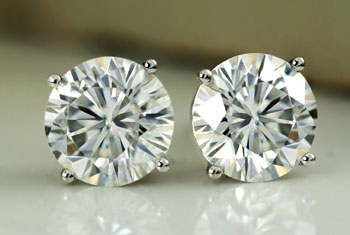
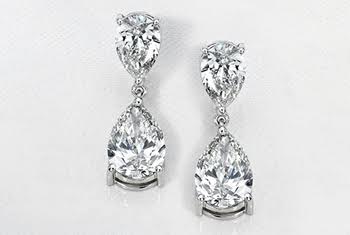
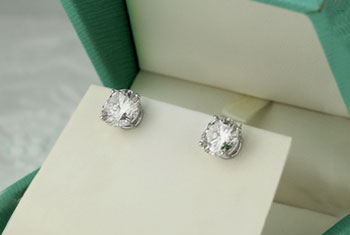
 Top
Top